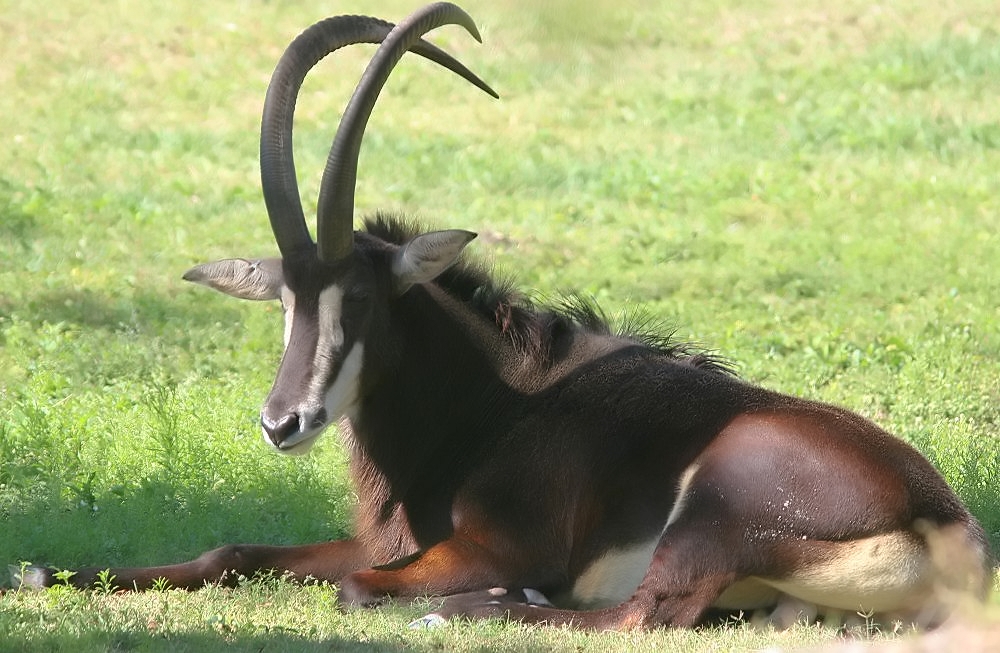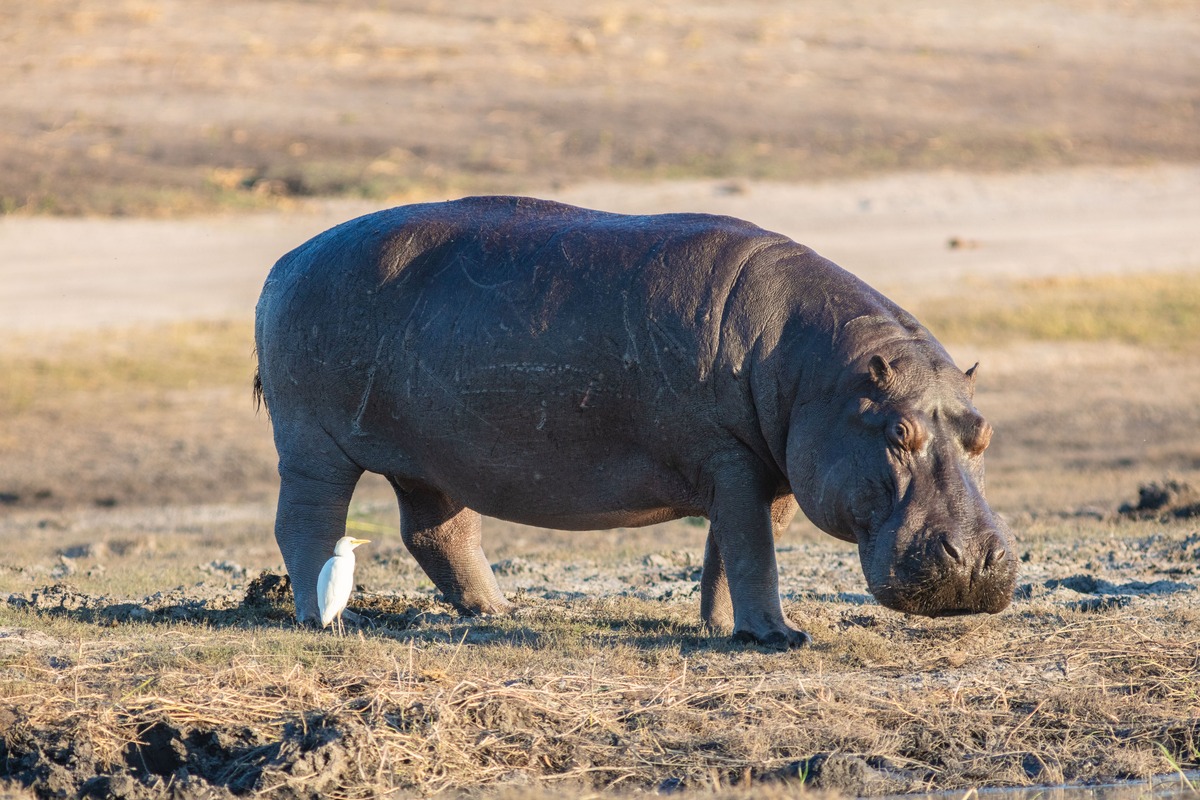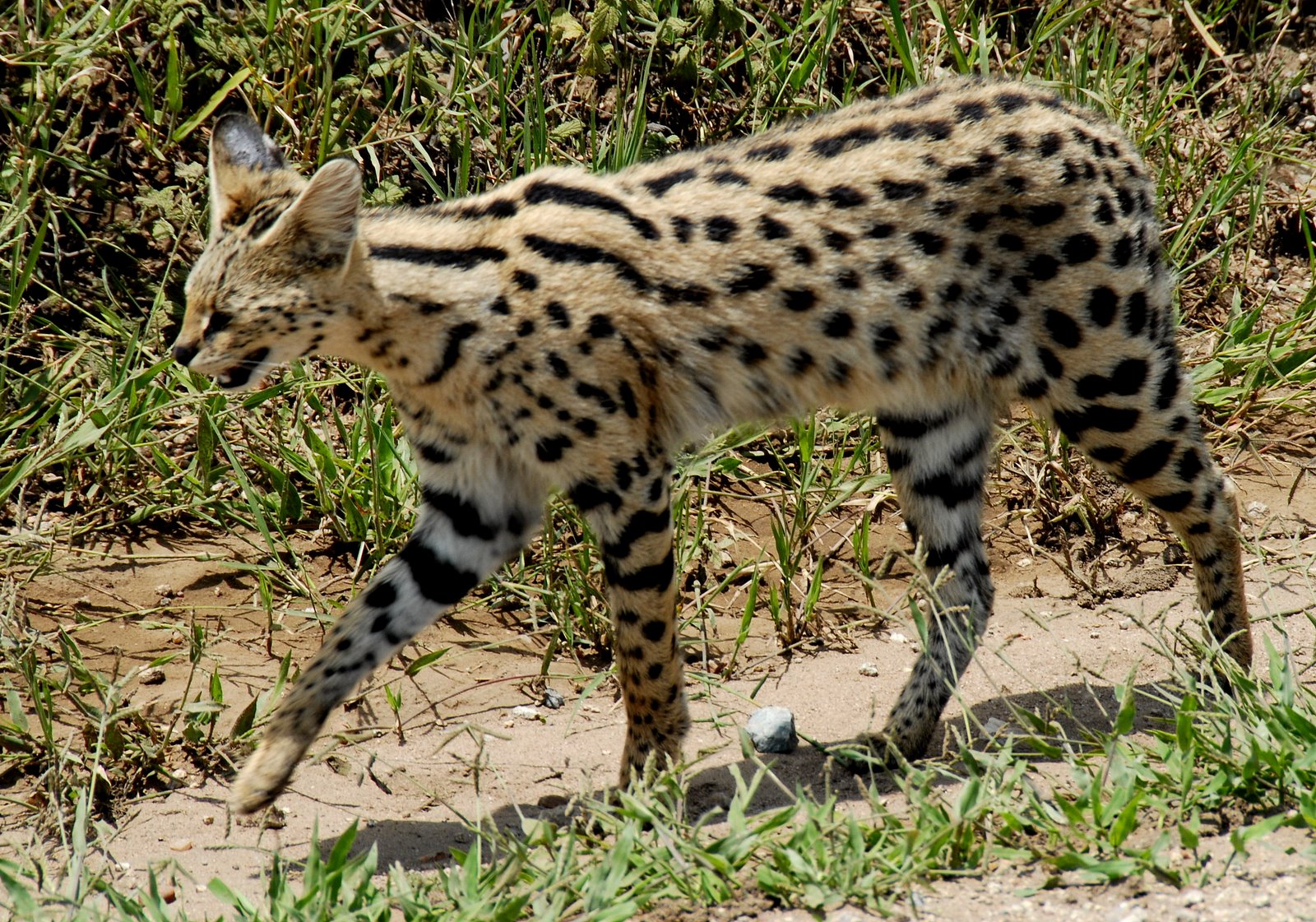Angolan Wet Miombo Woodlands
The ecoregion’s land area is provided in units of 1,000 hectares. The conservation target is the Global Safety Net (GSN1) area for the given ecoregion. The protection level indicates the percentage of the GSN goal that is currently protected on a scale of 0-10. N/A means data is not available at this time.
Bioregion: Greater African Subequatorial Savannas & Mixed Woodlands (AT11)
Realm: Afrotropics
Ecoregion Size (1000 ha):
44,966
Ecoregion ID:
36
Conservation Target:
16%
Protection Level:
2
States: Angola, Democratic Republic of Congo
The endemic and critically endangered giant black sable antelope was thought to be extinct for a decade before being rediscovered in 2005. Their current populations are still very low, with approximately 40 individuals in Cangandala National Park and less than 50 in Luando Reserve. A major cause of their decline was severe poaching during the Civil War. This resulted in a lack of mature sable males leading to a current threat to their population—hybridization of giant sable and roan antelopes.

The flagship species of the Angolan Wet Miombo Woodlands ecoregion is the giant sable antelope (Hippotragus niger variani). Image Credit: Wiki Creative Commons.
The ecoregion covers all of central Angola and extends into the Democratic Republic of Congo (DRC) and is mostly found at elevations between 1,000 and 1,500 meters (3,280- 4,921 ft) above sea level, including the highlands of Huíla, Huambo, and Bié. The area experiences a tropical climate with rainfall strongly concentrated in the summer months.
Mean annual rainfall ranges from less than 800 millimeters (31 in) in the south to about 1,400 millimeters (55 in) in the north and west. Mean maximum temperatures are around 30°C (86°F) in the south, falling to 24°C (75°F) at higher elevations. Minimum temperatures range from 15° to 18°C (59-64°F) in low-lying areas to 9°C (48°F) in higher-elevation areas. Soils are highly leached, tend to be acidic, and have low organic matter. In some areas, drainage is restricted, and there is seasonal waterlogging.
-CC-Charles%20J%20Sharp-2018_resized.jpg)
Spotted hyena (Crocuta crocuta). Image Credit: Charles J. Sharp, Wiki Creative Commons
Miombo woodland is distinguished from other African savanna, woodland, and forest formations by the dominance of tree species in the family Fabaceae, subfamily Caesalpinioideae, particularly in the genera Brachystegia, Julbernardia, and Isoberlinia. Large trees widespread in the Angolan miombo are Brachystegia spiciformis, Julbernardia paniculata, Copaifera baumiana, B. floribundam B. boehmii, B. gossweilerii, and B. wangermeeana. Most miombo woody species shed their leaves in the dry season. A few weeks before the onset of the rains, the trees flush again and many species flower.
This ecoregion is a part of the Zambezian regional center of endemism. Although the number of floral endemics is unknown, more than 170 mammal species occur, including four near-endemic small mammal species and one strict endemic—Vernay's climbing mouse. Larger antelopes with more specialized feeding habits are sable antelope, roan antelope, and Lichtenstein’s hartebeest.
_male-Charles%20J%20Sharp-2016_resized.jpg)
Ugandan defassa waterbuck (Kobus ellipsiprymnus defassa). Image Credit: Charles J. Sharp, Wiki Creative Commons.
Patches of better grazing are scattered through the drier miombo, typically associated with rivers and wetlands. These areas support a wider variety of species, such as giraffe, bushbuck, blue duiker, and yellow-backed duiker, with sitatunga, waterbuck, and tsessebe in the wettest areas. Threatened species include lions, cheetahs, and African wild dogs.
The herpetofauna of the ecoregion is moderately rich, with two strictly endemic frog species, the Angola ornate frog and the Huila forest tree frog. Among the reptiles are strictly endemic species, including Bocage’s horned adder. Termites produce enormous mounds that are richer in nutrients and organic matter than the surrounding nutrient-poor landscape. The ancient, well-drained, and nutrient-poor soils, along with the harsh dry season and long droughts, limit the density of herbivores and bias their composition towards larger-bodied species such as elephants and buffaloes.
-CC-Bernard%20Dupont-2014.jpg)
Side striped jackal (Lupulella adusta). Image Credit: Bernard Dupont, Wiki Creative Commons.
A number of protected areas fall within the ecoregion, all of them in Angola. Luando Integral Nature Reserve and the nearby Cangandala National Park were both formed to protect the giant sable antelope and are the only known areas where populations of this species survive. Proposals have been made to join these two reserves. Mupa National Park falls into the transition zone between Baikiaea woodlands of the southwest arid biome and the miombo woodland belt.

Hippopotamus (Hippopotamus amphibius) with a cattle egret (Bubulcus ibis) in Chobe National Park, Botswana. Image credit: Diego Delso, Creative Commons.
Human populations are generally low due to the nutrient-poor soils that limit agricultural potential and the presence of tsetse fly, the vectors of trypanosomiasis that affect humans as well as domestic livestock. The civil war led to poor security, mass displacement of people, and a depressed economy. Most protected areas have been abandoned for periods of time, as park wardens were forced to leave due to economic or security reasons.

Serval cat. Image credit: Creative Commons
The impact of the civil war (1974-2002) has been catastrophic on animal populations. Hybridization of sable and roan antelopes is common following the severe wartime poaching which resulted in a lack of mature sable males. Poaching for bushmeat and trophy hunting are still major threats in this ecoregion. Additionally, charcoal manufacture is extensive close to cities.
The priority conservation actions for the next decade
1) Support the continuing efforts of the controlled breeding program and sanctuary of giant sable antelopes.
2) Identify and create protected areas to cover important ecosystems and develop management plans for the rehabilitation of current protected areas.
3) Implement a permanent ban on hunting of endangered species, including the giant sable antelope and African elephant.
-
-
1. Burgess, N., Hales, J.A., Underwood, E., Dinerstein, E., Olson, D., Itoua, I., Schipper, J., Ricketts, T. and Newman, K. 2004. Terrestrial ecoregions of Africa and Madagascar: a conservation assessment. Island Press.
2. Pinto, P.V., Beja, P., Ferrand, N. and Godinho, R. 2016. Hybridization following population collapse in a critically endangered antelope. Scientific reports. 6, p.18788.
3. Ministry of Urban Affairs and Environment. 2006. National Biodiversity Strategy and Action Plan (NBSAP) – Angola. Luanda, Angola: Republic of Angola.
4. IUCN SSC Antelope Specialist Group. 2017. Hippotragus niger ssp. variani. The IUCN Red List of Threatened Species 2017. [Online]. [Accessed 2 March 2018]. Available from: http://www.iucnredlist.org/details/10169/0. -
Cite this page: Angolan Wet Miombo Woodlands. Ecoregion Snapshots: Descriptive Abstracts of the Terrestrial Ecoregions of the World, 2021. Developed by One Earth and RESOLVE. https://www.oneearth.org/ecoregions/angolan-wet-miombo-woodlands/
-




